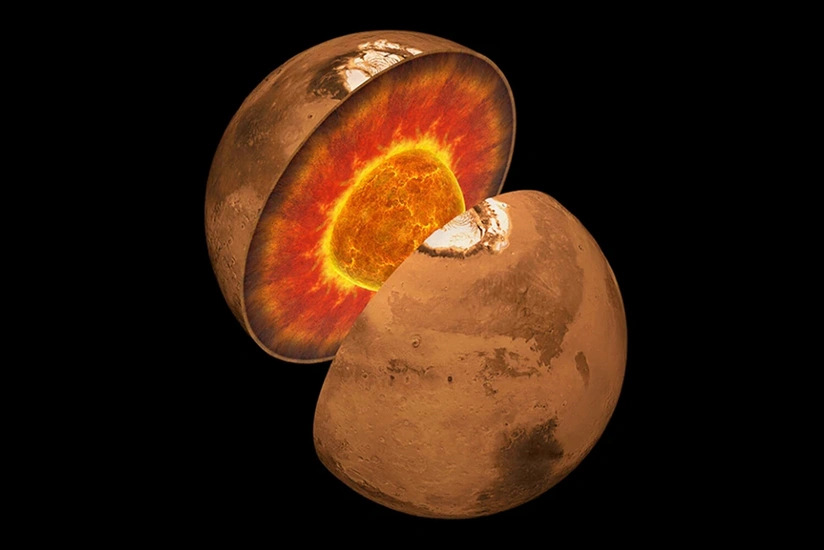Scientists study geological structure of Mars by analyzing meteorites
- 01 June, 2024
- 06:24

Research on Martian meteorites reveals unique geological insights into Mars’ crust and mantle, aiding our understanding of the planet’s volcanic and atmospheric history.
Report informs via ScienceAdvances that Mars has a distinct structure in its mantle and crust with discernible reservoirs, and this is known thanks to meteorites that scientists at Scripps Institution of Oceanography at UC San Diego and colleagues have analyzed on Earth.
Meteorites that formed roughly 1.3 billion years ago and then ejected from Mars have been collected by scientists from sites in Antarctica and Africa in recent decades. Scripps Oceanography geologist James Day and his colleagues report May 31 in the journal Science Advances on analyses of the chemical compositions of these samples from the Red Planet.
Day’s team assembled its account of Mars’ formation using meteorite samples that all came from the same volcano, known as nakhlites and chassignites. Some 11 million years ago, a large meteor impact on Mars sheared away parts of the planet and sent the rocks hurtling into space. Some of those landed on Earth in the form of meteorites, with the first of these being discovered in 1815 in Chassigny, France and then in 1905 in Nakhla, Egypt.
Since then, more such meteorites have been discovered in locations including Mauritania and Antarctica. Scientists are able to identify Mars as their place of origin because these meteorites are relatively young, so come from a recently active planet, have distinct compositions of the abundant element oxygen compared to Earth, and retain the composition of Mars’ atmosphere measured on the surface by the Viking landers in the 1970s.
The team analyzed the two keystone nakhlite and chassignite meteorite types. Nakhlites are basaltic, similar to lavas erupting in Iceland and Hawaii today, but are rich in a mineral called clinopyroxene. Chassignites are almost exclusively made of the mineral olivine. On Earth, basalts are a main component of the planet’s crust, especially under the oceans, while olivines are abundant in its mantle.
The same is true on Mars. The team showed that these rocks are related to each other through a process known as fractional crystallization within the volcano in which they were formed. Using the composition of these rocks, they also show that some of the then-molten nakhlites incorporated portions of crust close to the surface that also interacted with Mars’ atmosphere.
